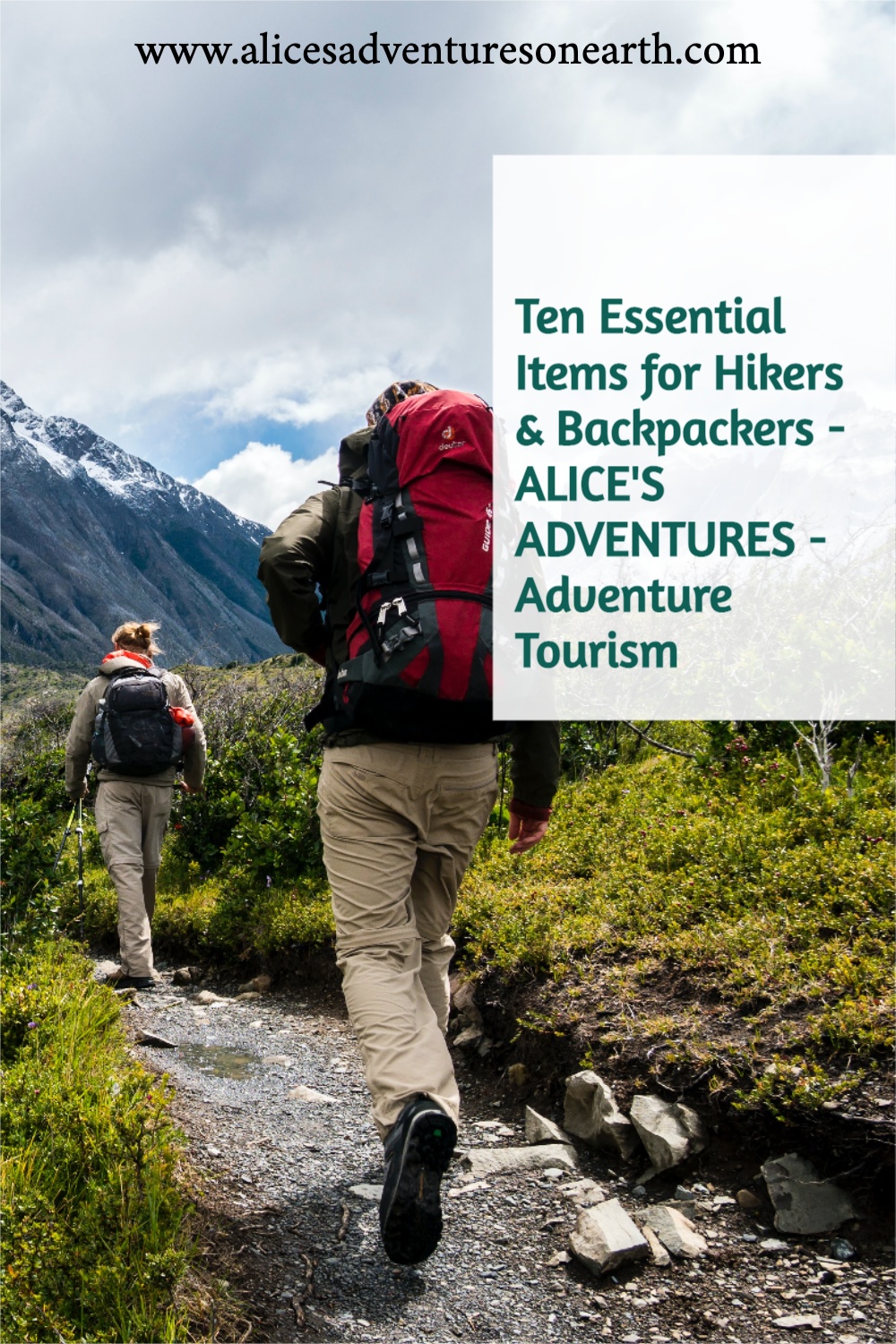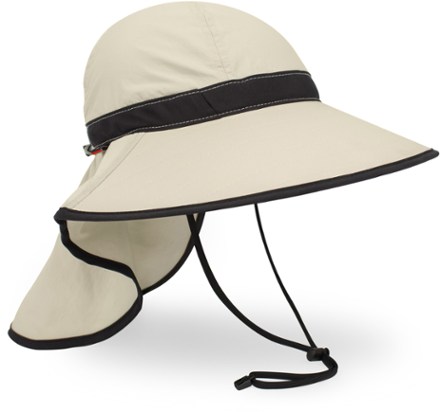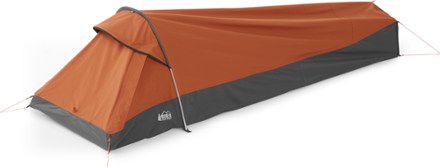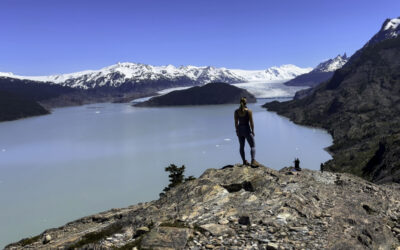10 Essentials for Hiking & Backpacking: What Every Hiker Needs
Heading off into the wilderness, far beyond the range of cell towers and medical care, can be an imposing and nerve racking experience. That’s especially true if you’re setting off without a ton of experience and aren’t sure how to be prepared for the outdoors. Carrying the 10 essentials for hiking is the best way to be ready to tackle what nature can throw out you—when you’re as prepared as possible, your chances of being caught off-guard by an emergency in the wilderness drastically drops.
Having the right mix of essential gear, hydration, and food for any adventure is the hallmark of a prepared hiker. You never know what will happen on the trail, from changes in weather to injuries, heat or cold related issues, hunger, or getting lost. The wilderness can be a dangerous place if you’re not properly equipped for what you may face out there!
Whether you’re new or old to hiking and backpacking, there are 10 essentials for hikers that every person and group leader should carry for emergencies and proper safety on the trail. I’ll share the 10 items I always carry with me on my hiking and backpacking adventures as an experienced solo traveler and outdoor adventurer. Trust me—you don’t want to leave home without them.
Psst: Please make sure to always follow all local regulations when heading out into nature, Leave No Trace and respect wildlife. Also: this post contains affiliate links. If you make a purchase through them, I may receive a small commission (for which I am deeply grateful) at no cost to you.
#1 First Aid Kit
Every time you go hiking or backpacking, make sure that at least one person in your group has a first aid kit. You never know if and when you may sprain an ankle or get a bee sting, cut, abrasion, or sun burn and need something to help. I cater my first aid kit to what I need and keep it in a small waterproof bag inside my backpack. I carry these items at minimum:
- Neosporin/triple antiobiotic ointment
- Bandaids
- Gauze
- Bleed stop
- Ace wrap or athletic tape
- Sunscreen
- Lip balm
- An antihistamine, like Benadryl
- Anti-inflammatory, like ibuprofen or aspirin
- Electrolyte tablets
Be sure to bring along some of your prescribed medication if you take any—just in case you get lost or caught in a storm and are out longer than planned.
If you don’t want to piece together your own kit, you can get great ready-made kits for every type of adventure from My Medic. These also make excellent gifts for other hikers and backpackers in your life (or just to throw in the car for emergencies).
#2 Navigation
Navigation gear is some of the most important of the 10 essentials for hiking. It is imperative that you bring a map, compass, and GPS device for tracking the trail. When I head out solo, I always bring my Garmin InReach Mini for satellite communication and trail tracking. I never go without maps downloaded on AllTrails or another trail-tracking app like Gaia, which also has 4×4 and off-road tracks, or Cairn, which can message your safety circle after an allotted time of not finishing a trail.
While all these GPS services do have a monthly fee for using offline maps or communication, it’s well worth the nominal fee to be able to keep track of the trail and stay connected in case of emergency. Even with these devices it is still important to have a paper map and compass and know how to use them.

#3 Sun Protection
Even on cloudy days, it is so important to protect your face and body from the damaging rays of the sun and wind. Essential sun protection items for every hike are a hat or visor, long sleeves, a neck gaiter or bandana to protect your face from sun and wind, sunglasses, and sunscreen (aim for SPF 30+). Many of the best hikes leave you totally exposed under the sun for long periods, and the last thing you want is a nasty sunburn or cumuluative sun damage that increases your cancer risk.
#4 Insulation
No matter the time of year, be prepared the elements with a few items to keep you insulated, dry, and warm. Packing a jacket/raincoat and extra layer is always a good idea. Even on a warm summer hike, you will want something to protect you from rain, heat, or changing weather conditions, especially if you are hiking to higher elevations where the temperature is going to be very different than the temperature where you begin your hike.
I also recommend extra socks, especially if you’re hiking where there may be water on the trail. For colder climates, use the 3-1 system of layering: starting with a base layer of wool or dry wicking material, a middle layer of warm insulation, and a top layer that protects you from wind and rain. For more on layering for the ultimate warmth and insulation, read my Winter Gear Guide for hikers.
Looking for outdoor equipment at a great price? You will love Decathlon.
#5 Illumination
I can’t tell you how many times I have been saved by having a flashlight in my pack! Always pack a headlamp and flashlight in your kit. Make sure you bring extra batteries or a way to charge your lights, and always ensure your devices are fully charged before hitting the trail. Sometimes trails take longer than you think, and the worst thing is trying to stay on a trail in the dark without a light. On some trails, it can literally be the difference between life and death.
#6 Fire
Every emergency kit filled with the 10 essentials for hiking should have some sort of fire starting device. There are tons of options, so choose what works best for you and always keep it in a waterproof bag.
Here are a few ways you can start a fire with small, easy-to-carry items:
- Lighter or USB lighter (I just got one of these and they are awesome)
- Fire starter kit
- Flint stick
- Cotton balls, tampons, or other paper products for kindling
#7 Repair Kit
It’s always a good idea to carry a few repair items that can help you quickly fix up any broken items that happen along the way. If you’ve spent enough time on the trail, you’ll see that something is bound to break at the most inopportune time—and sometimes, being able to limp it along the rest of the way with a quick, on-the-trail fix can save your hike.
Bringing the right repair gear can also pull double duty and help you cut wood, tape, or packaging. I always carry a multi-tool or knife and some tape, zip ties, a small plastic bag, and mylar repair kit for my tent, pack, or sleeping bag. Consider your gear and items you might need to repair things from your kit.

#8 Nutrition
You may think a granola bar is plenty for a short hike in the woods, but always be prepared for emergencies that keep you in the wilderness longer than you planned by carrying extra food and snacks. You will want to bring one extra day’s supply of no-cook, nutritious foods. I like to carry dried fruit, trail mix or granola, dry oats, and protein powder as emergency foods. I always pack my favorite sandwich, like a PB&J, or some whole-grain banana pancakes for the trail.
#9. Hydration
By far the most important of the 10 essentials for hikers: hydration. Packing the correct amount of water can make or break any adventure. You can survive weeks without food, but death from lack of water can happen in just 3 days. Always bring more water than you think you need, and make sure you take into consideration the temperature and length of your trip.
I like to bring water in a 3-liter water bladder and always have a backup way to filter or purify water if I run out. Depending on your adventure, you may want a water filter like the Sawyer squeeze bottle, a Lifestraw, or the Ketadyn Be Free.
#10 Emergency Shelter
Being stuck out in the wilderness at night—when you aren’t planning on it—can be a scary situation. To be prepared, always pack some sort of emergency tent, a space blanket, tarp, or bivy (emergency shelter for a sleeping bag) that can protect you in case of injury or unplanned nights in nature. I always carry a space blanket, and if you have trekking poles, you can erect a small but warm shelter in a pinch.
Bonus Essentials to Bring
With the above 10 essentials for hikers, you’ll be well-prepared. But if you want to take things a step further, add these bonus essentials to your pack.
- I always pack in my bag is a microfiber towel for washing, wiping, or even using as a place to sit while out in the woods.
- Bring a few wet wipes, some toilet paper, and a garbage bag—all great essentials for keeping yourself and the trail clean.
While I hope you never need of any of these emergency items on the trail, it is essential to always be prepared by carrying the 10 essentials for hikers. Don’t forget to do your research and Leave No Trace while out in nature.
If you want more info on being prepared for the trail, check out my hiking preparation series on YouTube and my other posts on getting in shape for the trail next!
Liked this article? Share it or Save to Pinterest


Is the W Trek the World’s Best Beginner Backpacking Trail?
The W Trek is a multi day hiking and backpacking trail in Chile’s Torres Del Paine National Park. Full of glaciers, lakes and scenic mountains and dotted with refugios where avid hikers can stay for the night.
Goat Canyon Trestle Hike: What to Know Before You Go
Step into the remote, mountainous wilderness of the Anza Borrego Desert with the Goat Canyon Trestle hike to the longest all-wooden trestle in the world.












My first overnight hike was a disaster. I was a teenager and didn’t think ahead at all. My boyfriend and I hiked up a mountain without checking the weather report. It was summer at the base of the hike. When we got to the summit it was snowing and we had forgotten the poles to our tent. I really could have used insulation and an emergency shelter.
Oh no, That is terrible. I’m glad you made it off the mountain. I’m sure that was not the way you wanted to learn about what to pack for a campout.
This post is a super useful resource! I’ve never done any multi-day hikes but even for day hikes, most of these items are applicable. I feel like such a noob though, I’m always prepared with extra food & water but never with any first aid – not even a band-aid! Keeping it in mind now for future hikes.
This is so helpful! I always carry Neosporin and Bandaids but haven’t thought about carrying an entire kit with alcohol and medications. I don’t have a compass, but having a nondigital one is probably a good idea too!
I am so glad it was useful. My first aid kit has been super helpful n so many instances.
This is a great list of essentials for hikers. We always think about food and water, but insulation is something we don’t think so much about unless the weather is obviously cold. But it can always change and temperatures can drop overnight. I always pack a microfibre towel as well, they’re brilliant for so many things and roll up to nothing.
Yes I love a good microfiber towel. I evidently end up dirty, sticky or wet somehow hahah
This is a great list! I always tell people to bring plenty of snacks, yet so many bring just some flimsy little granola bar and end up hungry long before we’re done hiking. Hikes are so much more enjoyable when you’re not hungry haha.